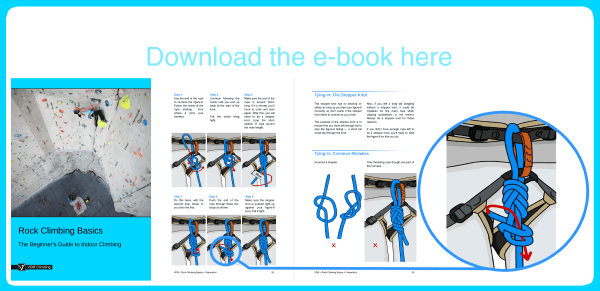If you are storing your rope for a while or stuffing it away in a back pack, coiling a climbing rope is worth the effort and will save you lots of time untangling knots that have mysteriously tied themselves in the middle of it.
Coiling a Climbing Rope
Step 1
Hold the middle of your rope in one hand and loop both strands over your shoulders.
Some ropes have a convenient middle marker to make this easy. If yours doesn't, find both ends and hold them together. Then shuffle both the strands of rope through your hands until you get to the middle point.
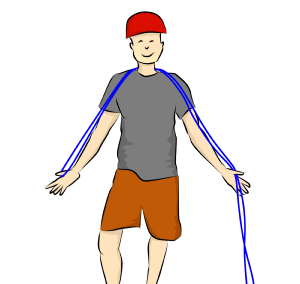
Step 2
Reach across and grab the rope below your other hand.
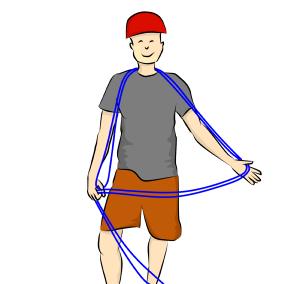
Step 3
Pull your hand along the rope, creating enough space to flick the next two strands over your head, so they rest on your shoulders with the first two.
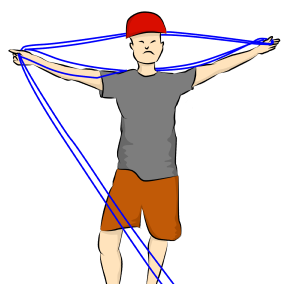
Repeat this with your other hand in the opposite direction.
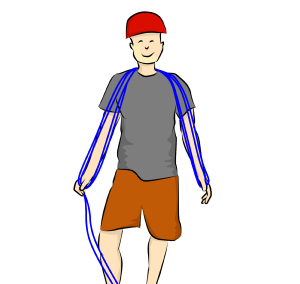
Step 4
Keep draping the rope over your shoulders until there is about four meters left.
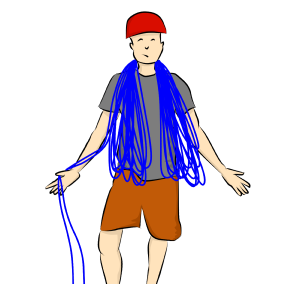
Use both hands to take the rope off your shoulders, and drape the middle of the loops over your arm.
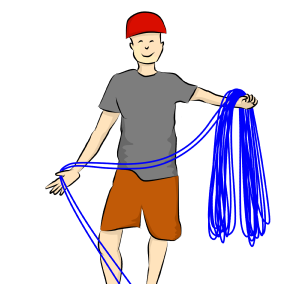
Step 5
Wrap the two ends of the rope tightly around all the coils near the top. Do this three or four times.
It's best to go from the bottom upwards.
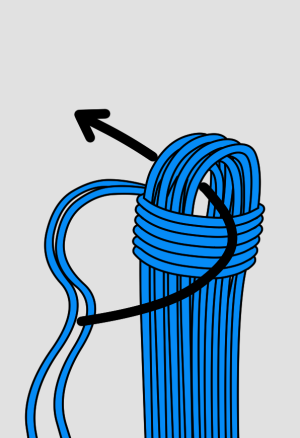
Step 6
Push a loop of each end through the top of the main coils as shown.
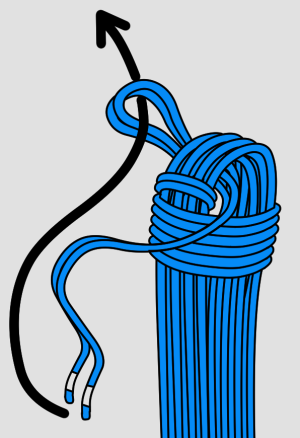
Step 7
Pass the two ends of the rope through these loops.
Pull it all tight and your rope is coiled!
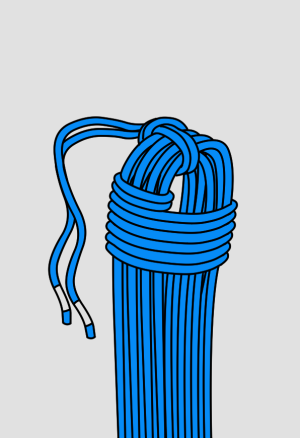
Step 8
If the tails of rope are long enough (at least 1 meter), you can tie the rope on your back.
Pull the tails over your shoulders, cross them over your chest, then wrap them in opposite directions around your back. Bring the ends in front of you and tie them together around your waist.
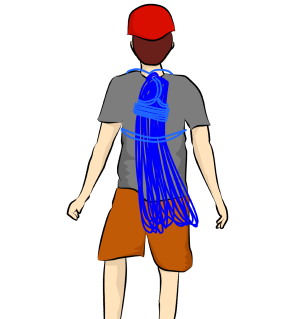
How To Stack a Climbing Rope
Coiling a climbing rope is useful when you need to carry it or pack it away neatly, but you'll need to 'stack' the rope so that it will feed out without tangles while you're climbing.
Beginning at one end, simply feed the rope into a pile on top of your rope bag, or a clean area of the ground. Tying the ends of the rope into the straps of your rope bag makes it easier to find them. When preparing to lead climb, the leader will tie into the top end of the rope.

